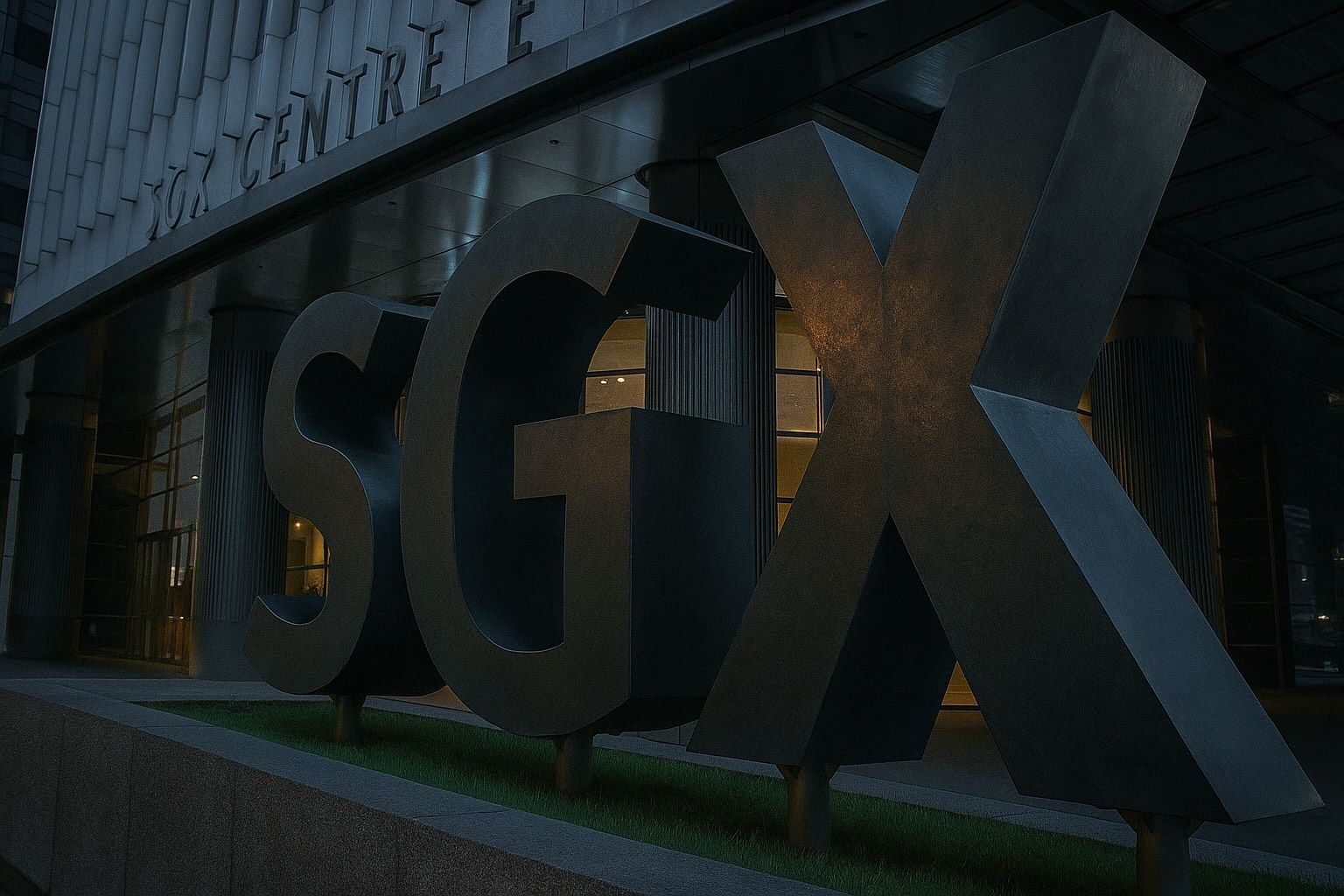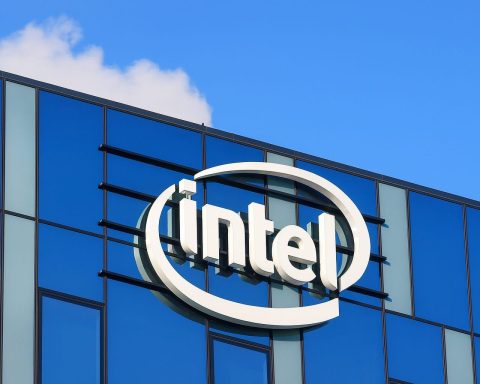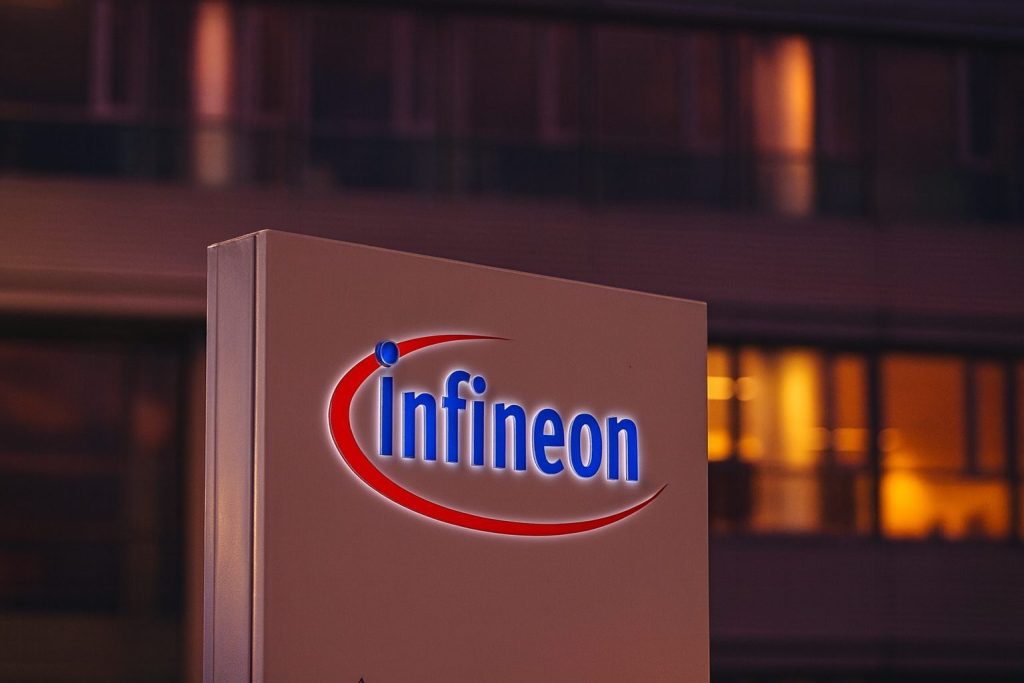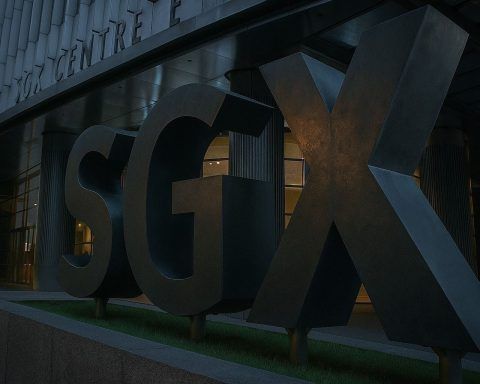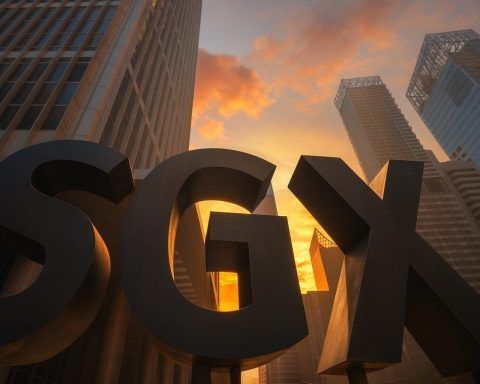Singapore’s stock market added to this week’s gains on Thursday, with large caps, regional optimism and a busy corporate news flow driving selective buying across the bourse.
The benchmark Straits Times Index (STI) rose 0.2% (7.78 points) to close at 4,509.34, extending its climb after Wednesday’s Wall Street rally and another positive session for Asian equities. The iEdge Singapore Next 50 Index slipped 0.05% to 1,444.74, while overall market breadth remained constructive with 270 gainers versus 216 losers, on 1.2 billion securities worth about S$1.2 billion traded. [1]
Singapore stock market today: STI tracks regional gains
Singapore’s move higher today was part of a broader regional risk-on tone:
- Hang Seng Index (Hong Kong): +0.1%
- Nikkei 225 (Japan): +1.2%
- Kospi (South Korea): +0.7%
- FTSE Bursa Malaysia KLCI: –0.4% [2]
Earlier in the day, Asian markets had already opened mostly higher, supported by overnight strength in the US and Europe. The STI opened about 0.28% higher at 4,514.14, in line with modest gains across regional indices. [3]
On Wall Street, the S&P 500, Dow Jones Industrial Average and Nasdaq Composite each advanced between roughly 0.7% and 0.8% in the previous session, as traders grew more confident that the US Federal Reserve will continue cutting rates and that the incoming Fed leadership will lean towards a more growth-friendly stance. [4]
SPI Asset Management’s Stephen Innes noted that markets are increasingly pricing in a Fed chair who could pursue “faster cuts” and a lower neutral rate, a combination he characterised as powerful “oxygen for risk assets,” particularly AI-related names. [5]
For Singapore, that backdrop translated into:
- Continued strength in blue-chip counters
- Firm demand for yield plays such as REITs
- Risk appetite in speculative small caps and high-volume penny stocks
Top STI movers: DFI Retail, UOL and the big three banks
Within the STI, consumer, property and banking names set the tone.
DFI Retail Group leads the gainers
DFI Retail Group was the top STI gainer, climbing about 1.5% to US$3.44. [6]
The move suggests investors continue to rotate into defensive, cash-generative consumer names as they look for stable earnings and dividend support while still participating in the regional risk rally.
UOL lags on profit-taking
At the other end of the benchmark, UOL Group was the worst-performing STI constituent, falling 1.4% to S$8.47. [7]
After a strong run in Singapore property counters earlier this month, today’s pullback in UOL looks like a mix of profit-taking and cautious positioning around interest-rate expectations and the local residential market.
Banks stay firm but mixed
Singapore’s three local banks continued to anchor the index and remain central to investor positioning:
- DBS Group Holdings: +0.3% to S$54.00
- OCBC Bank: +0.2% to S$18.27
- UOB: –0.1% to S$33.89 [8]
Despite the slight dip in UOB, the overall picture for the banking trio remains constructive. Margins are stabilising, fee income is improving as capital markets activity picks up, and banks continue to feature prominently in yield-oriented portfolios.
Corporate news to watch: UOB, Lendlease REIT, IHH Healthcare and Cordlife
Beyond the index-level moves, stock-specific headlines on Nov 27 are shaping sentiment for the days ahead.
UOB: Court upholds S$17.7m damages in Lippo Marina case
The High Court has upheld an earlier decision to award UOB S$17.7 million in damages related to the Lippo Marina Collection lawsuit, which involved inflated housing loans linked to Marina Collection units. The bank had sought S$92 million, but the judge ruled that UOB had not fully mitigated its losses. [9]
UOB shares closed at S$33.89 today, slightly down on the day but still near levels seen before the judgment was reaffirmed, suggesting no major negative surprise for investors. [10]
Lendlease Global Commercial REIT: PLQ Mall acquisition completed
Lendlease Global Commercial REIT announced the completion of its S$234.3 million purchase of 70% of PLQM Trust, which owns 100% of PLQ Mall in Paya Lebar. The deal was funded primarily via a S$280 million private placement, with S$234.5 million earmarked for the acquisition. [11]
The REIT’s units closed 0.8% lower at S$0.615 on Wednesday, ahead of today’s broad market gains, as investors digest near‑term dilution and gearing implications against the longer‑term potential of a high-traffic suburban mall. [12]
IHH Healthcare: Strong Q3 results keep healthcare in focus
In regional healthcare, IHH Healthcare (which is widely followed in Singapore via its SGX listing and SDR interest) reported 3QFY2025 net profit of about RM616 million, with double‑digit year‑on‑year growth in both revenue and earnings. Analysts point to Malaysia and India as key growth drivers and expect a stronger 4Q as new capacity and medical tourism initiatives kick in. [13]
The upbeat read‑through reinforces the defensive‑growth appeal of healthcare in regional portfolios, a theme that resonates with Singapore investors looking beyond local banks and REITs.
Cordlife: MOH clampdown and trading halt
Regulatory risk was front and centre for Cordlife Group, whose shares remained in the spotlight after Singapore’s Ministry of Health (MOH) ordered the company to stop collecting, testing, processing and storing new cord blood from Nov 26. [14]
Following the order, Cordlife requested a trading halt on Nov 27, pending a detailed announcement, and will be allowed only to maintain storage of existing cord blood units with limited permitted actions. [15]
For investors, the case is a stark reminder of headline and regulatory risk in smaller healthcare names, and could prompt some rotation into better‑governed, better‑capitalised peers.
Most active SGX counters: Penny plays, Genting Singapore and big REITs
Liquidity on Nov 27 was heavily concentrated in a mix of penny stocks, cyclical plays and large REITs, according to SGX market data compiled by SGInvestors. [16]
Among the top volume counters:
- CapAllianz Holdings (594): Traded around S$0.002 with nearly 93.7 million shares changing hands, underscoring continued speculative interest in ultra‑low‑priced energy and resources plays.
- Marco Polo Marine (5LY): Rose 4.39% to S$0.119 on robust volume above 55 million shares, as investors bet on offshore and marine recovery.
- Genting Singapore (G13): Remained heavily traded around S$0.755, with over 45 million shares done, reflecting sustained interest in tourism and gaming exposure.
- Embracing Future Holdings (8YY): Jumped 17.39% to S$0.027, suggesting active short‑term trading flows in small-cap names.
- CapitaLand Integrated Commercial Trust (CICT, C38U): Added 0.42% to S$2.37, supported by about 31 million units traded as investors continued to accumulate high‑quality retail and office REITs.
- Mary Chia Holdings (5OX): Surged 23.68% to S$0.047 on a spike in volume, a reminder that micro-caps can move sharply on relatively modest absolute flows. [17]
On the large-cap telecom side, Singtel (Z74) saw solid turnover but closed 0.42% lower at S$4.74, as investors weighed its regional exposure against domestic competitive pressures. [18]
Small caps under pressure: 52‑week lows and governance questions
While the STI and blue chips advanced, parts of the small‑cap universe remained under strain. SGInvestors’ 52‑week low list for Nov 27 highlights names such as Japan Foods Holding and Avarga trading at or near the bottom of their one‑year price ranges. [19]
This dovetails with a pair of governance-focused commentaries published today:
- A Straits Times / Business Times op‑ed from the Securities Investors Association (Singapore), or SIAS, warns that corporate governance gains remain uneven, with smaller SGX‑listed firms trailing the STI heavyweights. It argues that resource constraints, founder‑dominated boards and a “tick-the-box” compliance mindset are holding back valuations and investor interest in small caps. [20]
- Another article highlights that CEOs of STI companies now average 8.8 years in the top job, versus a global average of 7.2 years, and just 3.7 years in Hong Kong’s Hang Seng Index. The study suggests that while Singapore boards value stability and internal succession, Asia-Pacific overall is seeing shorter tenures amid faster market shifts and investor activism. [21]
Together, these pieces underline a critical theme for the Singapore market: investor confidence is increasingly tied to board quality, disclosure standards and succession planning, especially for smaller issuers trying to attract new capital.
SDRs in the spotlight: AI, EVs and regional growth via SGX
Another structural story for Singapore investors today came from Singapore Depository Receipts (SDRs).
A Business Times feature notes that SGX now hosts 29 SDRs across three markets – 10 from Thailand, 16 from Hong Kong and three from Indonesia – giving local investors SGD‑denominated access to foreign blue chips during Singapore trading hours. [22]
Key takeaways from July–October performance:
- Delta Electronics (Thailand) was the biggest SDR winner, with a 143% price increase, driven by strong earnings from AI data‑centre demand.
- SMIC (Hong Kong) and Alibaba also posted substantial SDR gains, supported by optimism over semiconductor demand and aggressive AI investment plans.
- On the flip side, BYD, Xiaomi and Pop Mart were among the notable laggards, hit by concerns over EV competition, smartphone margins and a potential “Beanie Baby‑style” bust in collectible toys. [23]
For Singapore investors, SDRs broaden the market beyond the STI and local mid‑caps, offering diversified exposure to regional AI, EV and consumption themes without the complexity of direct foreign market access.
What today’s move means for Singapore investors
Putting today together, several key themes emerge for anyone tracking or investing in Singapore stocks:
- Momentum still positive, but gains are moderating
- The STI has extended its climb, but with a modest 0.2% gain, suggesting investors are selectively adding risk rather than chasing the market. [24]
- Blue chips remain the anchor of the market
- Banks, large REITs and defensive consumer names continue to draw steady flows, reflecting ongoing demand for quality, liquidity and yield. [25]
- Regulatory and governance risk is back in focus
- The Cordlife-MOH saga and SIAS’ governance commentary highlight that headline risk can be severe for smaller, weaker‑governed companies, reinforcing the premium accorded to well‑run blue chips and institutional‑quality mid‑caps. [26]
- Regional and global cues still drive day‑to‑day direction
- The local market remains tightly coupled to US rate expectations and global AI sentiment, as seen in the strong lead from Wall Street and the outperformance of SDRs tied to AI and tech names. [27]
- Opportunities lie beyond the STI – but with higher risk
- High‑volume penny stocks and micro‑caps can deliver outsized daily moves, but liquidity and governance concerns mean they are better suited to traders than long‑term, risk‑averse investors. [28]
Key data summary for Nov 27, 2025 (Singapore market)
- Straits Times Index (STI): 4,509.34 (+0.2%, +7.78 points) [29]
- iEdge Singapore Next 50 Index: 1,444.74 (–0.05%) [30]
- Market breadth: 270 gainers, 216 losers
- Total turnover: ~1.2 billion securities, S$1.2 billion in value [31]
- Top STI gainer: DFI Retail Group (+1.5%, US$3.44)
- Top STI laggard: UOL (–1.4%, S$8.47) [32]
- Local banks: DBS (+0.3%), OCBC (+0.2%), UOB (–0.1%) [33]
References
1. www.businesstimes.com.sg, 2. www.businesstimes.com.sg, 3. www.businesstoday.com.my, 4. www.businesstoday.com.my, 5. www.businesstimes.com.sg, 6. www.businesstimes.com.sg, 7. www.businesstimes.com.sg, 8. www.businesstimes.com.sg, 9. www.businesstimes.com.sg, 10. www.businesstimes.com.sg, 11. www.businesstimes.com.sg, 12. www.businesstimes.com.sg, 13. www.thestar.com.my, 14. www.moh.gov.sg, 15. www.businesstimes.com.sg, 16. sginvestors.io, 17. sginvestors.io, 18. sginvestors.io, 19. sginvestors.io, 20. www.straitstimes.com, 21. www.straitstimes.com, 22. www.businesstimes.com.sg, 23. www.businesstimes.com.sg, 24. www.businesstimes.com.sg, 25. www.businesstimes.com.sg, 26. www.moh.gov.sg, 27. www.businesstoday.com.my, 28. sginvestors.io, 29. www.businesstimes.com.sg, 30. www.businesstimes.com.sg, 31. www.businesstimes.com.sg, 32. www.businesstimes.com.sg, 33. www.businesstimes.com.sg
